What types of piping are the SC01 series shielded transition couplings compatible with?
The descriptions for the SC01 series shielded transition couplings have been known to cause some confusion. In this article we will explain the description in greater detail.
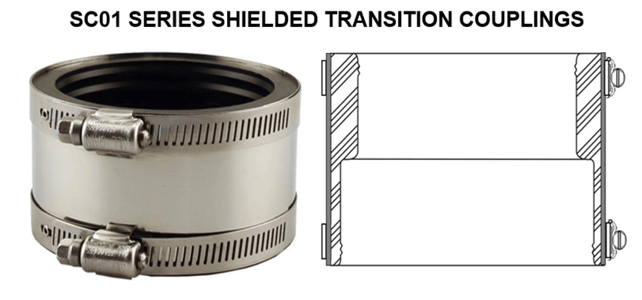
At the end of the write up you will find a few diagrams which provide a visual aid regarding what types of pipes can be connected using these transition couplings.
C.I. (CAST IRON)
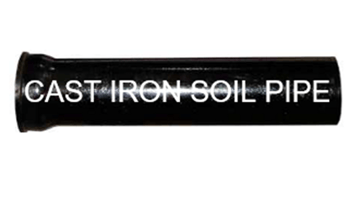
The C.I. term refers to both CAST IRON and DUCTILE IRON soil piping. In most nominal sizes, cast iron pipe has a slightly smaller outside diameter (O.D.) than carbon steel or plastic piping made to IPS (iron pipe size) dimensions. However, in the 1-1/2” nominal size, the diameters are the same at 1.89” C.I. and 1.90” IPS.
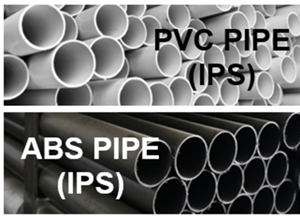 PLASTIC (I.P.S.)
PLASTIC (I.P.S.)
The term plastic typically refers to either PVC or ABS piping, however using the terminology iron pipe size (I.P.S.) may be less confusing as the couplings will work on any type of piping manufactured to the IPS standard. This includes PVC, ABS, carbon steel, stainless steel, and red brass piping which all have the same outside diameter.
THE C.I. or PLASTIC DESCRIPTION…
When the description states C.I. / PLASTIC it means that you can use it for either type of piping. Generally speaking, the cast iron will be a loose fit, having a smaller O.D., while the plastic will have a snug fit. The flexibility of the coupling allows the clamp to secure the shielded transition coupling onto different diameters of pipe.
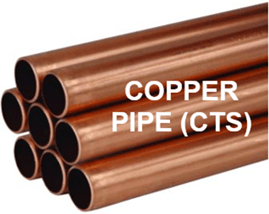 COPPER
COPPER
The term copper is straight forward as it is the most common application, however the terminology copper tube size (C.T.S.) may be more accurate as the coupling will work on any type of piping manufactured to the CTS standard. This also includes CPVC piping which has the same outside diameter as type K, L or M copper pipe.
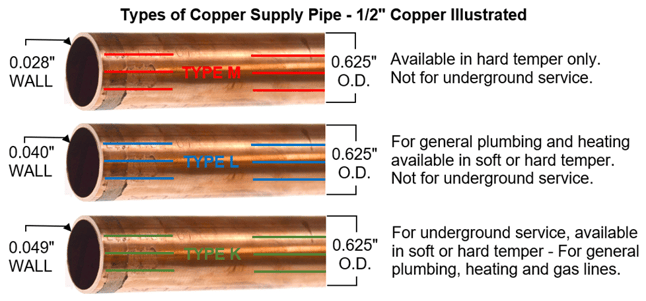
THE COPPER or PLASTIC DESCRIPTION
Example #1 - When the description states 1-1/4” copper or 1” plastic it means that you can use it for either type of piping. Copper pipe will be the larger 1-1/4” CTS (1.375” O.D.) and the 1” plastic is IPS size (1.315” O.D.). The diameters are similar enough that the coupling can cover the range, however the IPS size (plastic piping) is smaller and will be a looser fit.
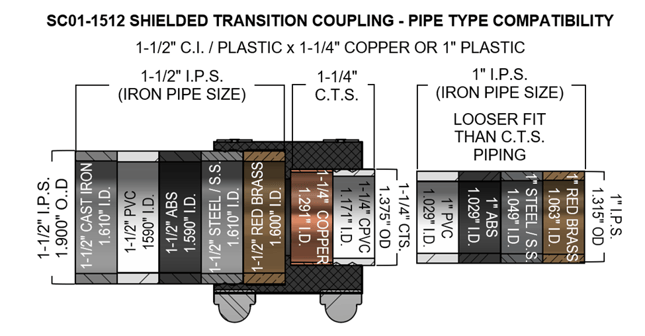
Example #2 - When the description states 1-1/2” copper or 1-1/4” plastic it means that you can use it for either type of piping. Copper pipe will be the larger 1-1/2” CTS (1.625” O.D.) and the 1-1/4” plastic is IPS (1.660” O.D.). The diameters are similar enough that the coupling can cover the range, however in this case the IPS size (plastic) piping is larger and will be a tighter fit.
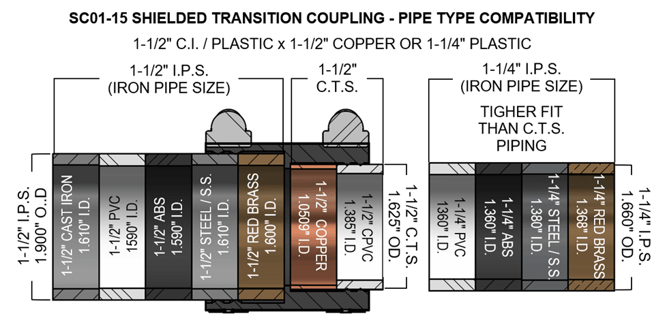
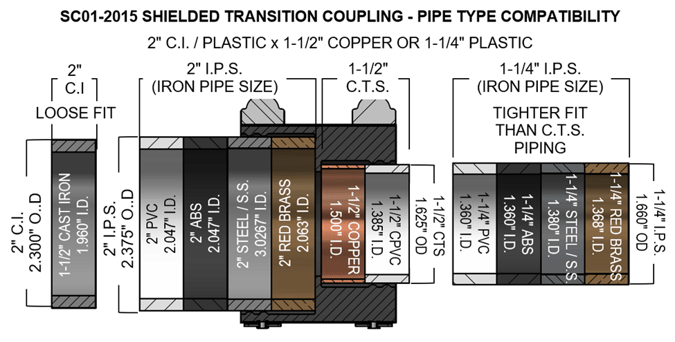
Additional Resources:
Iron Pipe Size Vs. Copper Tube Size
Copper Development Association Inc. https://www.copper.org/
https://www.engineeringtoolbox.com/cast-iron-soil-pipe-dimensions-d_1751.html
